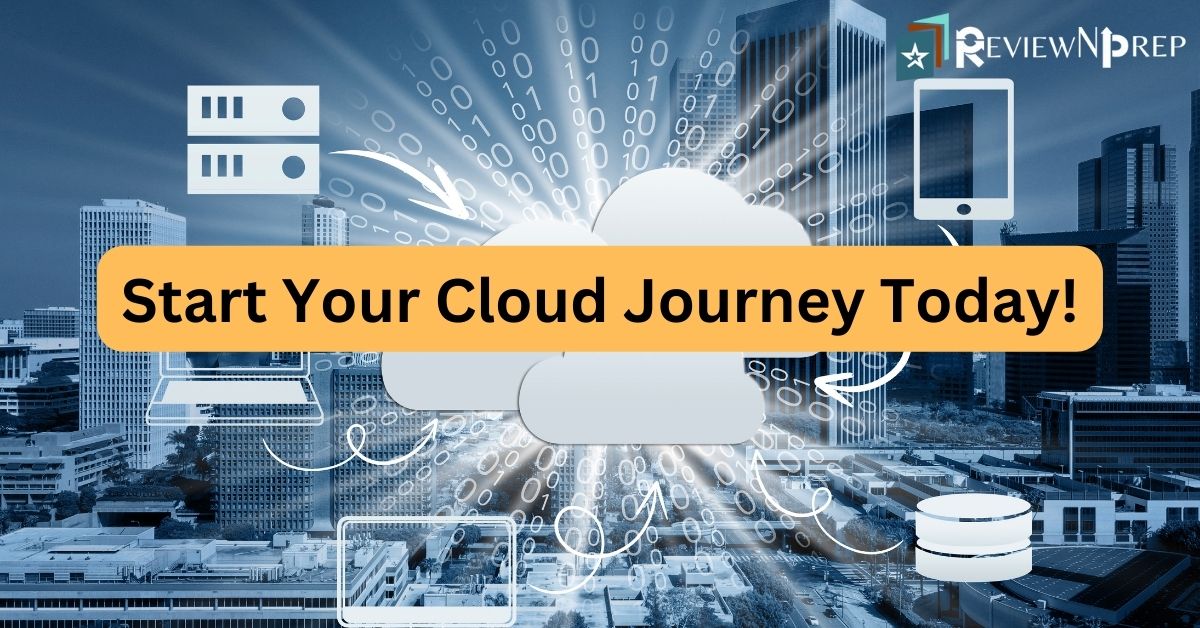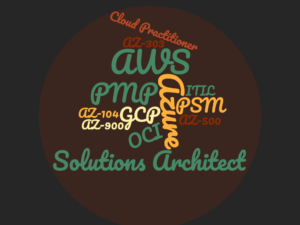|
|
Welcome to the world of cloud computing! Whether you’re a small business owner or an individual looking to streamline your digital operations, understanding the basics of cloud computing is essential. In this beginner’s guide, we will walk you through everything you need to know to get started.
In today’s digital age, cloud computing has become an integral part of our personal and professional lives. From storing your photos on the cloud to running sophisticated business models, cloud computing has revolutionized the way we access, manage, and process data.
Cloud computing offers a flexible and scalable solution that eliminates the need for physical servers and on-premise hardware. With the cloud, you can easily store and retrieve your files from anywhere, collaborate with team members in real-time, and take advantage of powerful computing resources without investing in expensive infrastructure.
In this article, we’ll demystify the cloud jargon and explain key concepts such as infrastructure as a service (IaaS), software as a service (SaaS), and platform as a service (PaaS). We’ll also explore the benefits of cloud computing and address common concerns such as security and data privacy.
Whether you’re a beginner or have some familiarity with the cloud, this article will equip you with the knowledge you need to confidently embrace cloud computing. Let’s dive in and unlock the potential of the cloud!
Table of Contents
What is cloud computing?
Cloud computing is revolutionizing the way we store, access, and manage data. It offers a flexible and scalable solution that eliminates the need for physical servers and on-premise hardware. Instead of storing your files and applications on a local device or server, cloud computing allows you to store and retrieve them from remote servers accessed via the internet.
The cloud essentially acts as a virtual data center, providing you with the ability to access your files and applications from anywhere, at any time, using any device with an internet connection. This means that you no longer need to rely on physical storage devices or worry about losing important data due to hardware failure or loss.
Benefits of cloud computing
There are numerous benefits to adopting cloud computing for your business or personal use.
1. Cost-Efficiency
Cloud computing eliminates the need for on-site data centers, reducing capital expenditures. You pay only for the resources you consume, making it a cost-effective option. Cloud service providers typically operate on a pay-as-you-go model, allowing you to only pay for the resources you actually use thus reducing operating costs.
2. Scalability
Cloud computing offers unparalleled scalability. As your data storage and computing needs grow, you can easily scale up your cloud resources without the need for costly hardware upgrades. This allows you to adapt to changing demands and avoid unnecessary expenses.
3. Accessibility
Cloud computing enhances collaboration and productivity. With the cloud, multiple users can access and work on the same files simultaneously, regardless of their physical location. This fosters seamless collaboration and real-time communication, making it easier for teams to work together and achieve their goals.
4. Business Continuity
Cloud services provide redundancy and backup solutions, ensuring that your data is safe even in the face of disasters.
Types of cloud computing services
Cloud computing services can be broadly classified into three categories: infrastructure as a service (IaaS), software as a service (SaaS), and platform as a service (PaaS).
IaaS provides virtualized computing resources such as virtual machines, operating systems, storage, and networks. This allows you to build and manage your own virtual infrastructure without the need for physical hardware. Examples of IaaS providers include Amazon Web Services (AWS), Microsoft Azure, and Google Cloud.
SaaS, on the other hand, offers ready-to-use software applications that are hosted and maintained by the cloud service provider. Users can access these applications via the internet without the need for installation or local storage. Popular examples of SaaS include Google Workspace, Microsoft 365, and Salesforce.
PaaS provides a platform for developers to build, deploy, and manage applications without the need to manage the underlying infrastructure. This allows developers to focus on coding and application development without worrying about server management. Platforms like Heroku, Microsoft Azure App Service, and Google App Engine fall under this category.
Cloud computing statistics
Cloud computing has witnessed exponential growth in recent years, and the numbers speak for themselves. According to a report by Statista, in 2023, the global public cloud services market is expected to grow by approximately 21.7 percent, which amounts to about 597 billion U.S. dollars.This indicates a significant increase in cloud computing adoption across industries.
Moreover, a survey conducted by Flexera revealed that 87% of respondents reported having a multi-cloud strategy, and 72% are taking a hybrid approach by combining the use of both public and private clouds.
These statistics highlight the widespread acceptance and recognition of the benefits offered by cloud computing.
Understanding the cloud computing infrastructure
To better understand how cloud computing works, it’s important to grasp the concept of the cloud computing infrastructure. The cloud infrastructure consists of various components, including data centers, servers, storage devices, and networking equipment.
Data centers serve as the backbone of the cloud, housing the servers and storage devices that store and process data. These data centers are spread across different geographical locations to ensure redundancy and minimize downtime.
Servers within the data centers are responsible for running applications and storing data. They provide the computing power necessary to process and deliver information to users.
Storage devices, such as hard drives and solid-state drives, are used to store data in a reliable and scalable manner. Cloud service providers typically employ redundant storage systems to ensure data durability and availability.
Networking equipment enables communication between different components of the cloud infrastructure and facilitates the transfer of data between servers and storage devices. Additionally, networking deals with bandwidth monitoring to ensure optimal performance and resource utilization.
Cloud computing models – public, private, and hybrid clouds
Cloud computing models can be categorized into three main types: public, private, and hybrid clouds. Each model has its own advantages and considerations, depending on the specific needs and requirements of your organization.
Public clouds are owned and operated by third-party cloud service providers. These providers make their computing resources available to the public over the internet. Public clouds offer high scalability, cost-effectiveness, and ease of use. They are suitable for businesses and individuals looking for a flexible and affordable cloud solution.
Private clouds, on the other hand, are dedicated to a single organization and are typically hosted within the organization’s own data center. Private clouds offer increased level of control, security, and customization options compared to public clouds. They are ideal for organizations with strict data privacy and compliance requirements as infrastructure and services are accessed through a private network.
Hybrid clouds combine elements of both public and private clouds. They allow organizations to leverage the benefits of both models by combining on-premise infrastructure with public cloud services. Hybrid clouds offer the flexibility to scale resources based on demand, while also ensuring data security and control.
Cloud computing providers – Amazon Web Services, Microsoft Azure, Google Cloud
When it comes to choosing a cloud computing provider, there are several options available in the market. The three major players in the cloud computing industry are Amazon Web Services (AWS), Microsoft Azure, and Google Cloud.
Amazon Web Services (AWS) is the market leader in cloud computing, offering a wide range of services and solutions. AWS cloud provides a comprehensive suite of cloud products, including computing power, storage options, databases, and analytics tools. With a vast global infrastructure, AWS is known for its scalability, reliability, and extensive ecosystem of third-party integrations.
Microsoft Azure is another popular cloud platform that provides a wide array of services and tools. Azure offers a seamless integration with Microsoft’s suite of products, making it an attractive choice for organizations already using Microsoft technologies. Azure provides a robust set of cloud services, including virtual machines, databases, and AI capabilities.
Google Cloud is Google’s cloud computing platform, offering a suite of services similar to AWS and Azure. Google Cloud provides a scalable and reliable infrastructure, along with advanced analytics and machine learning capabilities. It also offers a wide range of developer tools and APIs, making it a preferred choice for developers and data scientists.
Related: Get Cloud certified, check out the courses on ReviewNPrep.
Cloud computing security and data privacy
One of the common concerns associated with cloud computing is security and data privacy. As organizations and individuals entrust their data to cloud service providers, it’s crucial to ensure that adequate security measures are in place to protect sensitive information.
Cloud service providers invest heavily in security infrastructure and employ various security measures to safeguard data. These measures include encryption, firewalls, access controls, and regular security audits. Additionally, cloud providers adhere to strict compliance standards and regulations, such as the General Data Protection Regulation (GDPR), to ensure data privacy.
However, it’s important to note that data security is a shared responsibility between the cloud service provider and the user. Users must implement best practices for data protection, such as using strong passwords, enabling multi-factor authentication, and regularly backing up data.
Cloud computing adoption and implementation considerations
Before starting your cloud journey, there are several considerations to keep in mind.
Firstly, it’s important to assess your organization’s specific needs and requirements. Understanding your data storage capacity and computing needs will help you choose the right cloud computing model and provider.
Secondly, consider the cost implications of cloud computing. While cloud services offer cost savings compared to traditional on-premise infrastructure, it’s essential to evaluate the pricing models and potential hidden costs associated with cloud computing.
Thirdly, ensure that you have a well-defined migration strategy in place. Migrating existing applications and data to the cloud requires careful planning and execution. It’s advisable to start with a pilot project or a phased approach to minimize disruption and ensure a smooth transition.
Lastly, consider the impact of cloud computing on your organization’s IT infrastructure and workforce. Cloud migration may require changes in your IT setup and may impact the roles and responsibilities of your IT team. It’s important to provide adequate training and support to ensure a successful transition.
Conclusion
Cloud computing offers a myriad of benefits, from scalability and cost savings to enhanced collaboration and productivity. By understanding the basics of cloud computing and the different types of cloud services available, you can make informed decisions and leverage the power of the cloud for your business or personal use.
As cloud computing continues to evolve, it’s crucial to stay updated with the latest trends and best practices. The cloud computing landscape is constantly changing, with new technologies and services being introduced regularly. Embracing cloud computing and harnessing its potential can give you a competitive edge, and drive innovation in your digital operations.
So, whether you’re a beginner or have some familiarity with the cloud, this guide has equipped you with the knowledge you need to confidently embrace cloud computing. It’s time to unlock the potential of the cloud and take your digital operations to new heights. Happy cloud computing!
Further Reading:
Check out this blog on how to protect your organization from cloud computing risks.
Check out this guide on how to learn and implement multicloud in your organization

